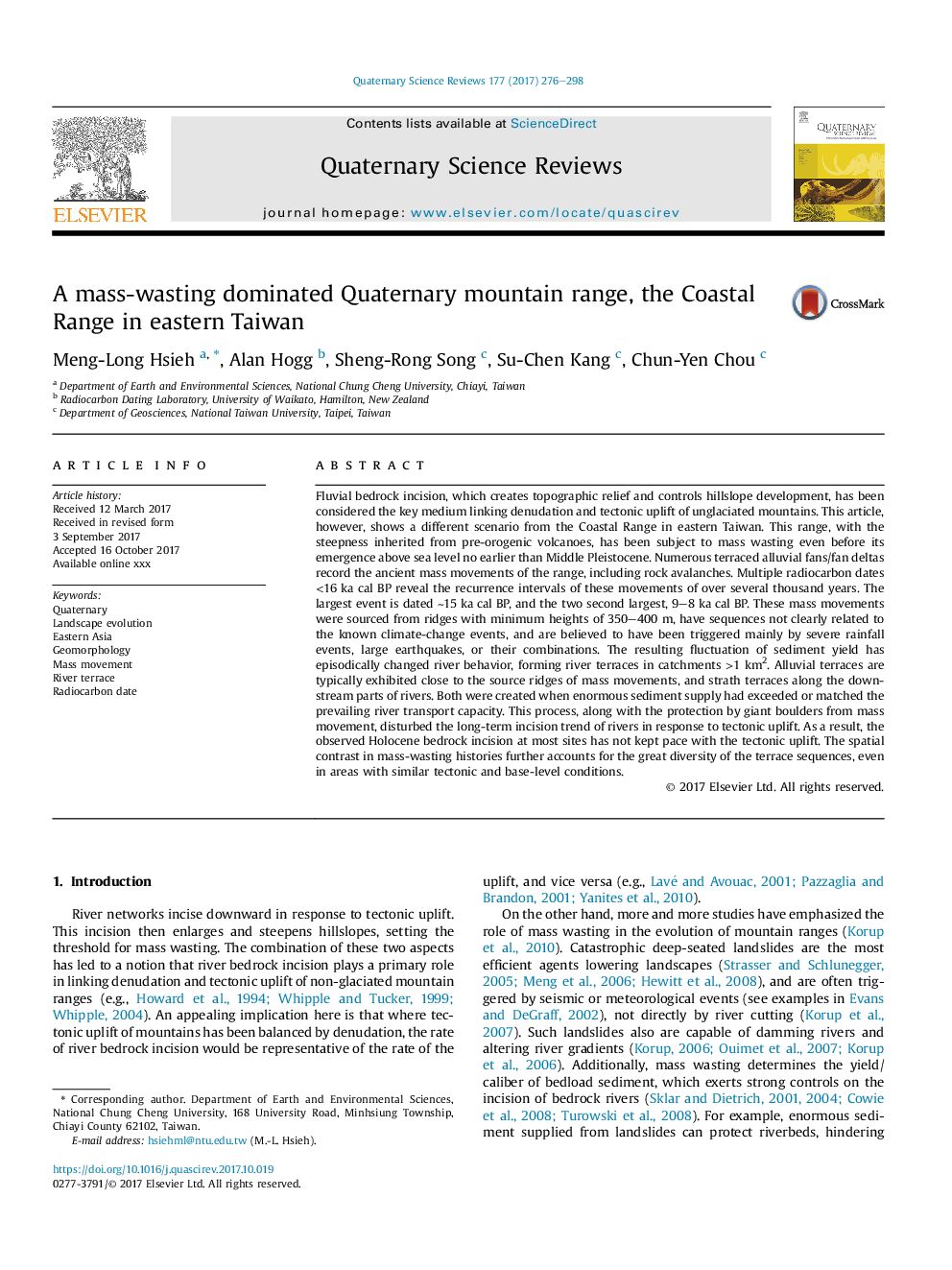| Article ID | Journal | Published Year | Pages | File Type |
|---|---|---|---|---|
| 8915104 | Quaternary Science Reviews | 2017 | 23 Pages |
Abstract
Fluvial bedrock incision, which creates topographic relief and controls hillslope development, has been considered the key medium linking denudation and tectonic uplift of unglaciated mountains. This article, however, shows a different scenario from the Coastal Range in eastern Taiwan. This range, with the steepness inherited from pre-orogenic volcanoes, has been subject to mass wasting even before its emergence above sea level no earlier than Middle Pleistocene. Numerous terraced alluvial fans/fan deltas record the ancient mass movements of the range, including rock avalanches. Multiple radiocarbon dates <16 ka cal BP reveal the recurrence intervals of these movements of over several thousand years. The largest event is dated â¼15 ka cal BP, and the two second largest, 9-8 ka cal BP. These mass movements were sourced from ridges with minimum heights of 350-400Â m, have sequences not clearly related to the known climate-change events, and are believed to have been triggered mainly by severe rainfall events, large earthquakes, or their combinations. The resulting fluctuation of sediment yield has episodically changed river behavior, forming river terraces in catchments >1Â km2. Alluvial terraces are typically exhibited close to the source ridges of mass movements, and strath terraces along the downstream parts of rivers. Both were created when enormous sediment supply had exceeded or matched the prevailing river transport capacity. This process, along with the protection by giant boulders from mass movement, disturbed the long-term incision trend of rivers in response to tectonic uplift. As a result, the observed Holocene bedrock incision at most sites has not kept pace with the tectonic uplift. The spatial contrast in mass-wasting histories further accounts for the great diversity of the terrace sequences, even in areas with similar tectonic and base-level conditions.
Keywords
Related Topics
Physical Sciences and Engineering
Earth and Planetary Sciences
Geology
Authors
Meng-Long Hsieh, Alan Hogg, Sheng-Rong Song, Su-Chen Kang, Chun-Yen Chou,
